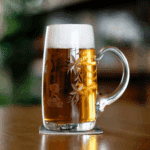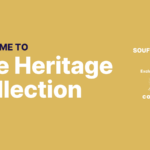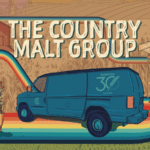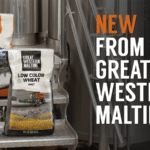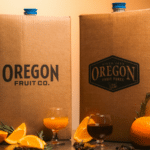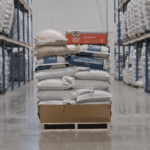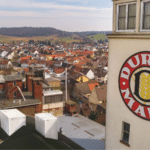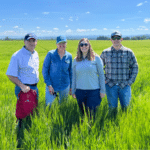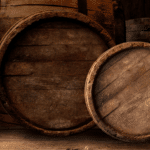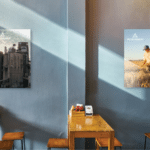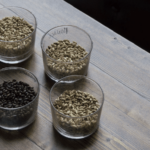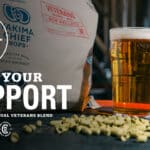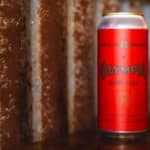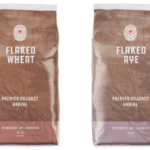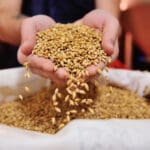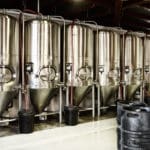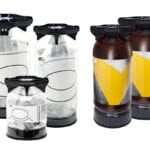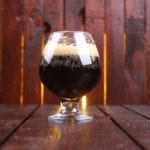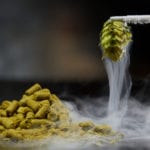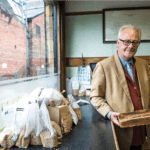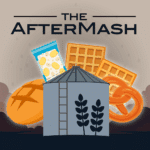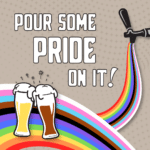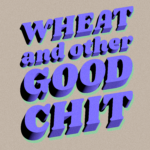A few words about sensory and beer
Everyone likes a good word said or written about their beer. When it tastes great and the consumer drops a note on the website, a beer blog or social media post, you get nods. Opinions are all too easily shared when it comes to beer flavor, and unfortunately, the negative voice is often the loudest. No one wants to see a photo of their packaged beer with a thread of critiques and criticism via a Facebook group of “Beer People.” It’s hard to not to be defensive to that noise.
But what if there is an ounce of truth in the feedback? What if it is something that can be detected and corrected? The magic is knowing what the off flavor is and being able to do something about it.
The flavor and the descriptors can be very subjective. However, trained brewery members can provide honest and meaningful data. Sensory feedback is like a trail of bread crumbs leading to a discovery that, when followed, can bring improvements to malt handling, hop storage, brewing processes, filtration, packaging, and serving. We all want our beers to sell well and receive praise for the best flavor and beer experience. So, let’s talk about it…let’s do some decoding.
Taste often and describe what your tasting
People don’t always know how to talk about what they taste. It takes training and reference standards to qualify sensory statements or flavor descriptors. For starters, pluck a few people from the brewery to taste and talk about the flavors they are experiencing. Take it easy, and listen to how they describe the flavor. Examine the statements carefully so you can begin to discern the flavor origin. Is it from the malt, the hops, or the yeast? Is it the desired flavor, or is it one that doesn’t belong?
I worked at a regional production brewery for seven years and they did an excellent job with sensory analysis training. Each day, panelists were given a vertical of 4 to 6 beers. Each beer was different, ranging in age from 3 to 120 days. Compiling the data of each panelist’s results took time, but the brewery invested the time in this daily practice because it is important for brand consistency, validation of flavor, and product knowledge.
Fast forward several years to now: as a representative for Country Malt Group, I attended the American Society of Brewing Chemists (ASBC) Malt Sensory and Flavor Symposium. The ASBC, along with the support of the malting companies located in North America, curated a flavor training unlike any I have ever attended. The meeting brought brewing scientists from around the globe to present research on advances to malt sensory and flavor. Cutting edge science from barley variety breeding advances in the malt house, and new process technology for brewers and distillers were but a few of the topics.
One especially good session on flavor and aroma demonstrated a product that brewers can use for sensory data collections called Draughtlab. It consists of a downloadable app that allows a brewer to track each brand and input descriptors for his/her beer. This app was used in conjunction with the ASBC Flavor Map for Malt. Coupling the DraughtLab app and the ASBC Malt Flavor Map, participants could easily grasp flavors and descriptors from a common lexicon. Both tools are tremendously useful for setting up and running daily sensory analysis at the brewery.
The Draughtlab app pulled it all together for me; how to organize sensory analysis and save time compiling the results. The flavors as described on the ASBC Flavor Map provided structure and support in tandem with the app. The lexicon of flavor vocabulary is grounded in science, with an origin for each descriptor. Using these tools may provide a brewer with an easy transition into a more formal sensory program.

Origin of flavor…
As a supplier, Country Malt Group spends time focused on understanding our products and how they influence beer flavor. Testing the raw ingredients, we chew our malt, rub the hops, and work alongside growers, maltsters, hop processors, and the producers of our other brewing aides, to assure our customers receive the highest-quality ingredients. Extensive laboratories in our malt houses and at our hop production facilities allow us to trace each product batch to its origin based on lot and process path due to our maintained libraries of retained samples. We do our best to provide brewers with the best ingredients for a great start, assuring the best quality of our malt and hops. As a supplier, it is critical to know the process path and supply chain from field to brewer. We take great pride in staying current with flavors, trends and beer styles that are traditional and new.
Staying current and having a strong vocabulary for beer and ingredients is something I value on a personal level. I recently worked alongside Rebecca Newman in crafting a session around off flavors for my team at Country Malt Group. Rebecca is a brewing scientist, past president of ASBC, and industry leader in QA, sensory, and innovation. Beyond blowing our minds and senses with both overt and hidden off flavors from raw ingredients, contamination and process flaws, Rebecca offered very practical insight on the importance of routine analysis to improve beer quality.
Sensory should be daily. Taste the beer in process; pre-filtration, post-filtration. Taste the beer in package and at age intervals. Taste your taps and visit your retail partners. This will assure your beer is presented in the best manner. Off-flavor kills beer, kills brands, and can ultimately close a brewery, so be aware of what to do when off flavors occur and how best to prevent them. Remember you can leave tips and supports for best beer handling, but the best thing you can do is support your product line with a solid education on the product.”
To add to your tool kit:
Sensory analysis, every day. Develop a program, even if it’s just a few people taking 15 minutes to discuss what they are tasting.
Use the ASBC Flavor Maps to train your brewery tasters and taproom staff on descriptors. When someone lands on a flavor descriptor, ask questions that dissect that flavor for further detail.
Compile your data. Use a product like DraughtLab or establish spreadsheets that work for your brewery and your variety of beer styles. Use meaningful words that describe your beer and your brands. Find a system that works well for you, and let the data speak to you. Look for trends and also for anomalies. Refer back to your findings each time you brew that beer.
For additional resources on sensory analysis, look to your local brewer’s guild, MBAA or ASBC for courses or training. ASBC has multiple webinars and methods of analysis that are available with membership. DraughtLab has details on the website www.draughtlab.com and both the base malt Flavor Map and the beer Flavor Map are available for purchase on the ASBC website www.asbcnet.org. Go ahead and reach out to experts like Rebecca and ask for support (it’s okay, she gave me permission) newman.rebecca@gmail.com
Building a strong sensory program supports your best efforts for quality.
